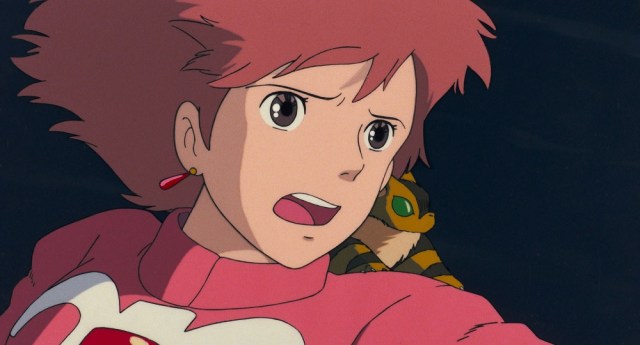
New documentary ends with scene of Miyazaki painting scene of not-yet-adapted source material from his manga masterpiece.
Anime director Hayao Miyazaki has, famously, “retired” twice, first after the release of Princess Mononoke in 1997, and then again following The Wind Rises in 2013. So with Studio Ghibli’s latest movie, The Boy and the Heron, now playing in U.S. theaters, there’s been some tongue-in-cheek comments from fans and critics about how this is Miyazaki’s third “final” film.
Here’s the thing though: back in 1997 and 2013, it was Miyazaki himself saying that he was done with making feature-length theatrical animation. This time, though, Miyazaki hasn’t made any explicit public statement to that effect, and the final scene in a new documentary about the legendary director has some fans excited for what they think may be a hint at his next project…which, if their speculation pans out, would also be an old one.
Last Saturday, Japanese public broadcaster NHK aired the latest episode of its Professional-Shigoto no Ryugi (“Professional-Work Style”) series which highlights leading figures in the art, music, sports, and entertainment worlds. The new episode followed Miyazaki over the course of nearly six years, chronicling the development of The Boy and the Heron and touching on Miyazaki’s thoughts on getting older, his complex relationship with late fellow Ghibli director Isao Takahata, and other topics.
The episode included a quote from Takeshi Honda, The Boy and the Heron’s animation director and character designer, regarding Miyazaki’s creative drive. “[Miyazaki] can’t stand being bored. He’s saying ‘I’m not doing another [project],’ but he probably will, won’t he?”
That alone probably gave fans hoping for more Miyazaki anime a ray of hope to latch onto, and that ray only got brighter with the very last scene of the episode, which shows Miyazaki sitting at his desk, brush in hand, working on a watercolor painting. The picture shows a brown-haired woman in a blue dress with a long-eared, squirrel-like creature perched on her shoulder, and she herself standing on the shoulder of a large skeletal/robotic-looking creature. As he paints, Miyazaki, in his customarily curmudgeonly way, grumbles:
“It’s a pain, coming back to this world.”
▼ Screenshots posted online of the scene’s painting
昨夜、NHK+で『プロフェッショナル〜仕事の流儀〜 ジブリと宮崎駿の2399日』を見逃し配信で見たんやけど、最後の最後に宮崎駿監督が水彩画を描いていて…
— のぃ@ (@noi0000) December 17, 2023
これは⁉️次はアレをやるのか⁉️#風の谷の pic.twitter.com/KfbJOppS5R
It’s obvious that the painting is of Nausicaa, the titular heroine of Nausicaa of the Valley of the Wind, the first original anime film that Miyazaki directed, produced with the team of animators who would found Studio Ghibli shortly after the movie’s release in 1984.
▼ Nausicaa of the Valley of the Wind
▼ Miyazaki’s watercolor shown in the documentary
やっぱり宮崎さんの水彩画ていいですね
— ぺこへい (@taJVv74qDE326xq) December 16, 2023
そしてなによりナウシカのこのつぶらな瞳がいい!
宮﨑さんのこういう少女の表情描く上手さが今も健在で良かった😊
ただ線がよぼよぼになってる感じは老いを感じさせますね pic.twitter.com/mFUYM40PGi
Though Nausicaa is widely recognized as a landmark anime work, what’s often overlooked or forgotten is that it’s actually an adaptation of a manga of the same name, which Miyazaki began writing/drawing in 1982. What’s more, the Nausicaa anime is an incomplete adaptation, as Miyazaki didn’t bring the manga’s story to a close until 1994, a full decade after the anime’s theatrical release. This isn’t a case of the manga simply moving at a slow pace, either, as the manga contains characters and story developments that don’t appear until after the events depicted in the anime, such as Nausicaa serenely standing on the shoulder of a God Warrior.
#プロフェッショナル仕事の流儀 で #宮﨑駿 監督が #風の谷のナウシカ の水彩画を描き直していたそうだけど、漫画の続きをアニメーション化するのかな!?
— Azumi Kou (@azofwizard) December 16, 2023
巨神兵オーマとナウシカ
描き直したナウシカはより幼く見えるけど https://t.co/gUH8wMEjA0 pic.twitter.com/Td0zs7zsy6
So why has Studio Ghibli been leaving Nausicaa source material on the adaptation table? A number of reasons, most likely. For the most part, Ghibli doesn’t do sequels (the Totoro follow-up short and Whisper of the Heart spin-off The Cat Returns notwithstanding), and Miyazaki’s sensibilities in particular seem more oriented towards creating something new than revisiting the characters and settings of finished films, hence his “It’s a pain” grumble while painting Nausicaa. It wasn’t like Ghibli was hunting for ideas or hits in the years after Nausicaa’s 1984 release either, as the studio brought Laputa/Castle in the Sky to theatres in 1986, Totoro in 1988, and Kiki’s Delivery Service in 1989.
Even if Miyazaki hasn’t formally re-announced his retirement, though, he will be 83 years old in just a few weeks, and that advanced age may place limits on his ability to helm a Nausicaa anime continuation, what with his intensely perfectionist, hands-on, and time-and-energy-consuming directorial style. However, Miyazaki has shown he isn’t averse to someone else adapting the as-yet-not-animated parts of the story, as the 2019 Nausicaa kabuki play was billed as the first complete adaptation of the manga’s plot.
▼ Miyazaki also commented that “Spirited Away doesn’t belong to me” when the Oscar-winning anime was adapted into a stage play, further showing that he’s not dead-set against other artists interpreting his creations.
And if Miyazaki isn’t in a position/of a mind to direct a Nausicaa continuation himself, there’s an obvious alternate with proven talents and an outspoken affection for the source material: Hideaki Anno, creator/director of Evangelion. Not only did Anno animate the God Warrior scene in the 1984 Nausicaa anime, he and Miyazaki have formed a personal friendship (no small feat for two master animators who aren’t exactly known for their outgoing personalities) and have occasionally collaborated in the years since Nausicaa’s release, most famously with Anno voicing the protagonist in The Wind Rises despite having no previous voice acting credits. Studio Ghibli even provided a piece of now-rare movie-making equipment that Anno needed for the production of the final Rebuild of Evangelion movie.
Anno has been particularly vocal about how much respect he has for Miyazaki’s e-konte, as the anime industry’s extra-detailed annotated animation storyboards are called. Taking that into consideration with all of the other above-discussed aspects, directing an anime adaptation of the remaining Nausicaa manga source material, or at least the next chunk of it, based on storyboards and concept paintings from Miyazaki, seems like the sort of project Anno would enthusiastically accept.
Of course, at the moment this is all just speculation, and at no point in the documentary does Miyazaki explicitly say “Get ready for Nausicaa Part II!” Still, with Professional-Shigoto no Ryugi having spent, by the program’s count, 2,399 days filming for the episode, it seems like they wouldn’t have chosen the footage where Miyazaki is talking about returning to the Nausicaa world if they didn’t think it had some significance.
Source: Sponichi Annex via Livedoor News via Jin
Top image: Studio Ghibli
Insert images: Studio Ghibli (1, 2)
● Want to hear about SoraNews24’s latest articles as soon as they’re published? Follow us on Facebook and Twitter!

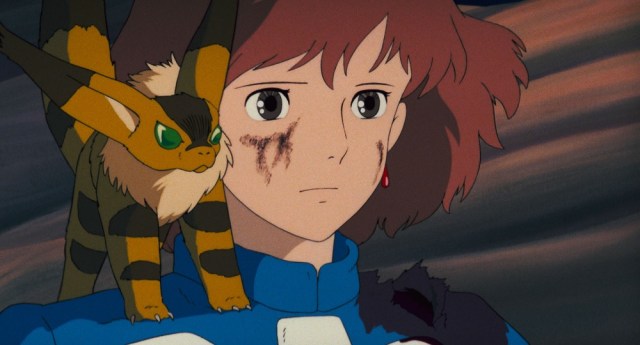
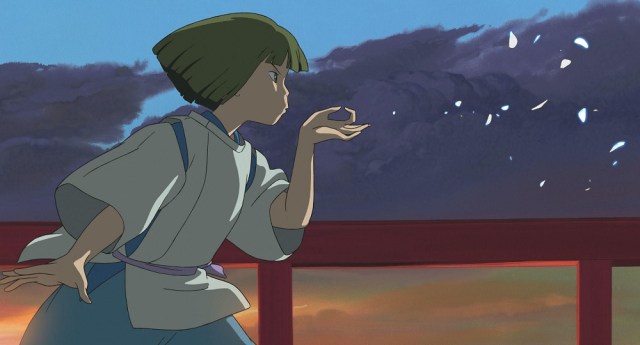
 Complete adaptation of Miyazaki’s Nausicaa of the Valley of the Wind is coming, as a kabuki play!
Complete adaptation of Miyazaki’s Nausicaa of the Valley of the Wind is coming, as a kabuki play! Evangelion creator says even Hayao Miyazaki anime don’t have enough Miyazaki
Evangelion creator says even Hayao Miyazaki anime don’t have enough Miyazaki Evangelion creator Hideaki Anno wants to make a live-action Nausicaä of the Valley of the Wind
Evangelion creator Hideaki Anno wants to make a live-action Nausicaä of the Valley of the Wind Nausicaa of the Valley of the Wind kabuki play’s rehearsal video is incredible【Video】
Nausicaa of the Valley of the Wind kabuki play’s rehearsal video is incredible【Video】 This isn’t an anime cel – It’s the greatest 3-D CG model of a Studio Ghibli character ever made
This isn’t an anime cel – It’s the greatest 3-D CG model of a Studio Ghibli character ever made Japan’s new difficult-to-drink-from beer glass protects your liver, but it’s a brutal experience
Japan’s new difficult-to-drink-from beer glass protects your liver, but it’s a brutal experience How to order snacks on a Shinkansen bullet train in Japan
How to order snacks on a Shinkansen bullet train in Japan Caffeinated ramen for gamers that you can eat with one hand going on sale in Japan
Caffeinated ramen for gamers that you can eat with one hand going on sale in Japan Hello, cosmetics! Clinique teams up with Hello Kitty this summer for first-time collaboration
Hello, cosmetics! Clinique teams up with Hello Kitty this summer for first-time collaboration Demon Slayer: Kimetsu no Yaiba gets new roller coaster attractions and food at Universal Studios Japan
Demon Slayer: Kimetsu no Yaiba gets new roller coaster attractions and food at Universal Studios Japan To combat declining birth rate, Japan to begin offering “Breeding Visas” to foreigners
To combat declining birth rate, Japan to begin offering “Breeding Visas” to foreigners High-fashion Totoro cuddle purse is like an elegant stroll in the forest【Photos】
High-fashion Totoro cuddle purse is like an elegant stroll in the forest【Photos】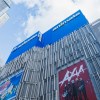 Gigantic new anime store opening soon in Tokyo, and here’s a sneak-peek【Photos】
Gigantic new anime store opening soon in Tokyo, and here’s a sneak-peek【Photos】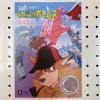 We investigate the newly released film revival of Hayao Miyazaki’s Sherlock Hound
We investigate the newly released film revival of Hayao Miyazaki’s Sherlock Hound Doraemon found buried at sea as scene from 1993 anime becomes real life【Photos】
Doraemon found buried at sea as scene from 1993 anime becomes real life【Photos】 Nintendo history you can feel – Super NES, N64, and GameCube controllers become capsule toys
Nintendo history you can feel – Super NES, N64, and GameCube controllers become capsule toys “The most Delicious Cup Noodle in history” – Japan’s French Cup Noodle wins our heart【Taste test】
“The most Delicious Cup Noodle in history” – Japan’s French Cup Noodle wins our heart【Taste test】 Starbucks releases a cute Frappuccino and Unicorn Cake…but not in Japan
Starbucks releases a cute Frappuccino and Unicorn Cake…but not in Japan Kyoto Tower mascot termination reveals dark side behind cute Japanese characters
Kyoto Tower mascot termination reveals dark side behind cute Japanese characters McDonald’s Japan’s Soft Twist Tower: A phantom ice cream only sold at select branches
McDonald’s Japan’s Soft Twist Tower: A phantom ice cream only sold at select branches Yabai Ramen: What makes this Japanese ramen so dangerous?
Yabai Ramen: What makes this Japanese ramen so dangerous? Finally! Nintendo Japan expands Switch 8-bit controller sales to everybody, Online member or not
Finally! Nintendo Japan expands Switch 8-bit controller sales to everybody, Online member or not Japanese government wants to build luxury resorts in all national parks for foreign tourists
Japanese government wants to build luxury resorts in all national parks for foreign tourists 10 things you should buy at 7-Eleven in Japan
10 things you should buy at 7-Eleven in Japan Studio Ghibli releases anime heroine cosplay dresses that are super comfy to wear
Studio Ghibli releases anime heroine cosplay dresses that are super comfy to wear Woman charged for driving suitcase without a license in Osaka
Woman charged for driving suitcase without a license in Osaka Studio Ghibli unveils My Neighbour Totoro miniature house model
Studio Ghibli unveils My Neighbour Totoro miniature house model Kyoto experiencing problems with foreign tourists not paying for bus fares, but not on purpose
Kyoto experiencing problems with foreign tourists not paying for bus fares, but not on purpose Fighting mild hunger with a Japanese soda that turns into jelly in the stomach【Taste test】
Fighting mild hunger with a Japanese soda that turns into jelly in the stomach【Taste test】 Studio Ghibli’s Howl’s Moving Castle tapestry unveiled in Japan for first time
Studio Ghibli’s Howl’s Moving Castle tapestry unveiled in Japan for first time McDonald’s new Happy Meals offer up cute and practical Sanrio lifestyle goods
McDonald’s new Happy Meals offer up cute and practical Sanrio lifestyle goods Sales of Japan’s most convenient train ticket/shopping payment cards suspended indefinitely
Sales of Japan’s most convenient train ticket/shopping payment cards suspended indefinitely Sold-out Studio Ghibli desktop humidifiers are back so Totoro can help you through the dry season
Sold-out Studio Ghibli desktop humidifiers are back so Totoro can help you through the dry season Japanese government to make first change to romanization spelling rules since the 1950s
Japanese government to make first change to romanization spelling rules since the 1950s Foreigner’s request for help in Tokyo makes us sad for the state of society
Foreigner’s request for help in Tokyo makes us sad for the state of society Ghibli founders Toshio Suzuki and Hayao Miyazaki contribute to Japanese whisky Totoro label design
Ghibli founders Toshio Suzuki and Hayao Miyazaki contribute to Japanese whisky Totoro label design Tokyo’s most famous Starbucks is closed
Tokyo’s most famous Starbucks is closed Princesses, fruits, and blacksmiths: Study reveals the 30 most unusual family names in Japan
Princesses, fruits, and blacksmiths: Study reveals the 30 most unusual family names in Japan Studio Ghibli co-founder and anime director Isao Takahata passes away in Tokyo
Studio Ghibli co-founder and anime director Isao Takahata passes away in Tokyo 10 best Studio Ghibli anime, as picked by Japanese fans– Different ages have different answers
10 best Studio Ghibli anime, as picked by Japanese fans– Different ages have different answers Disney to release ‘Collected Works of Hayao Miyazaki’ Blu-ray set
Disney to release ‘Collected Works of Hayao Miyazaki’ Blu-ray set Hayao Miyazaki Working on Proposed New Anime Feature Film
Hayao Miyazaki Working on Proposed New Anime Feature Film Studio Ghibli co-founder Toshio Suzuki receives lifetime achievement honor at Annie awards
Studio Ghibli co-founder Toshio Suzuki receives lifetime achievement honor at Annie awards Hayao Miyazaki’s Nausicaä of the Valley of the Wind set to become live-action Japanese kabuki play
Hayao Miyazaki’s Nausicaä of the Valley of the Wind set to become live-action Japanese kabuki play Studio Ghibli releases beautiful color vinyl record anime soundtrack series, available now【Pics】
Studio Ghibli releases beautiful color vinyl record anime soundtrack series, available now【Pics】 Ghibli film secret revealed as Japan Self-Defense Forces soldier deciphers secret code in Laputa
Ghibli film secret revealed as Japan Self-Defense Forces soldier deciphers secret code in Laputa Ghibli reveals genre of Hayao Miyazaki’s next anime, and that it’s also working on new CG film
Ghibli reveals genre of Hayao Miyazaki’s next anime, and that it’s also working on new CG film Hayao Miyazaki’s The Boy and the Heron nominated for Academy Award
Hayao Miyazaki’s The Boy and the Heron nominated for Academy Award Hayao Miyazaki makes rare video appearance to check out Ghibli Museum’s revamped cafe【Video】
Hayao Miyazaki makes rare video appearance to check out Ghibli Museum’s revamped cafe【Video】 Studio Ghibli is partnering with Star Wars’ Lucasfilm, it looks like
Studio Ghibli is partnering with Star Wars’ Lucasfilm, it looks like Hayao Miyazaki considers Demon Slayer his rival, Studio Ghibli producer says
Hayao Miyazaki considers Demon Slayer his rival, Studio Ghibli producer says New Laputa amulet actually responds when you incant the anime’s magic spells
New Laputa amulet actually responds when you incant the anime’s magic spells
Leave a Reply